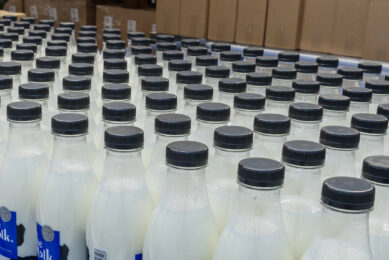Russian dairy industry braced for a turbulent year

2024 is expected to be a turbulent one for the Russian dairy industry due to waning demand on the domestic market and difficulties in delivering goods to foreign customers, Lyudmila Manitskay, general director of the Russian dairy union, told the local publication Veterinary and Life.
Russian dairy manufacturers anticipate no tangible rise in output in 2024. To drive the production figures up, the industry requires a rise in dairy consumption. Russian customers, on the contrary, are consuming fewer dairy products, Manitskay admitted.
In 2023, the per capita consumption was 165.6 kg, half of the level recommended by the Russian Health Ministry.
In the first half of 2023, the Russian dairy union warned about a possible 20-30% slump in dairy consumption in the country. The falling Russian population’s purchasing power was named to be the main factor to blame. It also largely shifted consumer attention to budget price categories.
Dairy export prospects still vague
Despite all efforts to expand dairy exports, Russia remains a net importer, according to Manitskaya. Sales to non-Russian customers are still largely constrained by a mix of factors.
Some old trade ties have been broken by Western sanctions, freight costs and port fees have skyrocketed, and fluctuations in the exchange rate of the Russian ruble also doesn’t help, she said. In some regions, for example in western Africa, there is a lack of alternative logistics operators, Manitskaya said.
Over the past few years, Russian exporters repeatedly complained that some logistics operators remain reluctant to work with Russian businesses.
The Russian government has introduced a full reimbursement of logistics subsidies for dairy exporters starting in early 2024. Manitskaya, however, expressed doubts that this measure could make a big difference for Russian exports. She suggested that Russian authorities consider establishing a national sea transportation system for dairy products.
Clearing things up
Russia’s cattle population has decreased by 200,000-300,000 heads per year, 100,000 of which are dairy cows, Manitskay said. On the other hand, dairy production in the country is growing. This can be explained by a rise in dairy herd productivity, however, there are doubts about whether the declared figures are indeed accurate.
According to Manitskay, 2024 may see a more comprehensive picture of the dairy industry in Russia.
Join 13,000+ subscribers
Subscribe to our newsletter to stay updated about all the need-to-know content in the dairy sector, two times a week.










